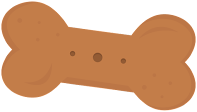This resource is included in the Zoo Animals for EFL. Click here:
https://www.teacherspayteachers.com/Product/Zoo-Animals-Flashcards-for-EFL-3611842
Here are several
printable games designed to target vocabulary, grammar, spelling and more. Use
these to have your students practice and reinforce the four skills in a fun
setting.
Zoo
animals board game. The players will navigate through the board and answer the
questions on the cards of the color they land on. Assemble the game pieces to
be used as markers. This kind of game helps improving their speaking skills in
English
Zoo
animals’ domino for vocabulary building. These
dominoes feature words and pictures to associate. Player
must match either the picture or the word on their tile to one end of the
tile already played. This is a visually stimulating and interactive
learning experience for English language learners.
Guess
what animal! This is a listening comprehension
game in which the players will practice listening to the questions the player 2
asks to guess the animal picked by player 1: Is it yellow?
Player 2: Does it
have a long tail?
Player 1: Yes, it
is.
Player 2: It’s a lion!!!
Players
use deductive reasoning and critical thinking skills to identify the animals.
Letter
Scramble. The
students will unscramble all the printed letters and using the zoo animals’ small
cards to write the correct spelling of the words. Students can also male words
in a crossword style.
Zoo
Animals Verb puzzle. This is a
collaboration and teamwork activity. They will need to communicate in English to
complete all the verb and picture puzzle items.
Expand
the activity by having the students write sentences using can, present
continuous or asking questions.
Zoo
Animal Picture mat. This activity
requires players to match words with pictures. It will stimulate cognitive
development such as critical thinking.
Zoo
animals move. Match
the verb to the picture. It can serve as a form of assessment, for you to check
if the players have understood the vocabulary. They will place the zoo animal
word and the verb on each picture.
Students
can make their own mat by coloring and cutting all the words and glue them on a
file folder.
Here
is the list of the verbs movement to complete the activity.
There
is the zoo animals eat game: Check the blog post
here: https://eflelementaryresources.blogspot.com/2024/04/zoo-animals-eat-activity.html
Go
to my other blog and check, more Zoo Animals resources:
https://eflpreschoolteachers.blogspot.com/2022/05/zoo-animals-unit-flashcards-for.html
















































